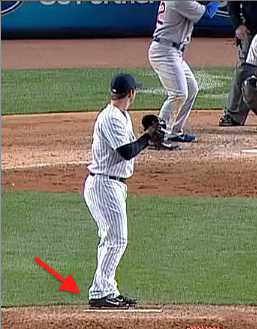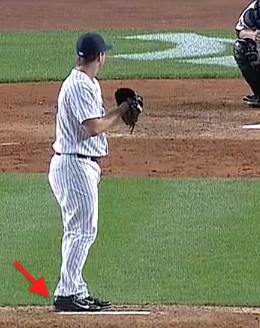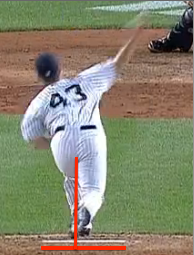
At least he's trying
After getting off to a really good start this season, Adam Warren has gone from an elite-level reliever (2.79 ERA, 2.70 FIP 1st half) to almost complete bullpen filler (6.55 ERA, 5.32 FIP 2nd half). It's actually not that crazy to wonder why he's even still in the majors at this point, considering he has options, the Yankees' position between the playoffs and oblivion, and the talent they have coming through the pipeline. Perhaps the hardest question to answer is why he's struggling at all.
One reason for his ineffectiveness could have to do with his ability to throw too many strikes:
| Zone % | Z-Swing % | O-Swing % | Z-Contact % | O-Contact % | |
| 2014 | 43.2 | 68.1 | 28.6 | 86.0 | 62.4 |
| Career | 41.1 | 66.4 | 30.5 | 84.2 | 66.0 |
He's seen some unfortunate trends in his zone, swing, and contact rates that shows he is throwing the ball over the plate too often. He's giving hitters better pitches to swing at and can't get them to chase out of the zone as much. Instead they're making more contact with pitches inside the zone and when you get better pitches to hit, you're more likely to make solid contact and do more damage.
One narrative that has been mentioned to explain Warren's struggles is fatigue. He started off strong, but now he's falling apart and with the grind of a full season out of the bullpen, throwing every day or every other day at a heightened velocity, he could be wearing down. Warren himself, however, doesn't believe that to be the case:
My body feels fine," Warren said. "I've had a week off between outings, so physically I feel fine. I think it's just one of those funks where I just feel like I can't quite get on top of the ball and feel like my stuff's not quite as sharp. Just trying to get back to good solid mechanics. I feel like I'm getting there. I haven't quite gotten there yet, but I feel like I'm getting closer.
When looking for signs of fatigue, one thing to look out for is a drop in release point because it means his arm/shoulder just doesn't have the strength it once had and his mechanics are falling apart. The odd thing is, though, that his release point has moved quite a bit from April through August, but not in the way that would put up a red flag.
You see, since April, Warren's release point has shifted ever so slightly, month after month. The height of his release point has not changed, but his release point has been moving closer to the middle of the plate.
I looked at some video of him throughout the year to see if I could pick out anything noticeably different, and something popped out to me immediately: His positioning on the mound. Perhaps in an attempt to counteract his struggles the Yankees have had him shift where he sets himself on the mound, that way the movement of his pitches might play up to his advantage.
On the left side is Adam Warren in April. Back at the beginning of the year he set himself with his heels in line with the first base-side of the pitching mound. Now in August, as seen on the right, Warren has his heels past the rubber.
During his delivery, April Warren released the ball just to the right of the center of the rubber, whereas August Warren releases the ball just to the left of it.
It's very subtle, but I imagine the slightest change can mean a lot in terms of where your pitches end up around the plate. Warren likes to pitch both lefties and righties down and away, but it's clear his pitches to right-handed batters catch too much of the plate. With a FIP almost one run higher against righties than lefties and right-handed hitters putting up a .335 wOBA against him, he likely wanted to try and find an advantage over them. By moving his delivery to the left, the natural break of his pitches will travel further out of the strikezone, allow his slider to be more of an outpitch, and hopefully push his K-rate against righties closer to what it is against lefties. Or at least that's the theory.
When we're talking about pitching mechanics, the slightest changes can mean a world of difference. As a reliever, Warren has an even smaller sample size from which to work off of and correct his mistakes, so any little thing counts. I just have to wonder if it's helping.




